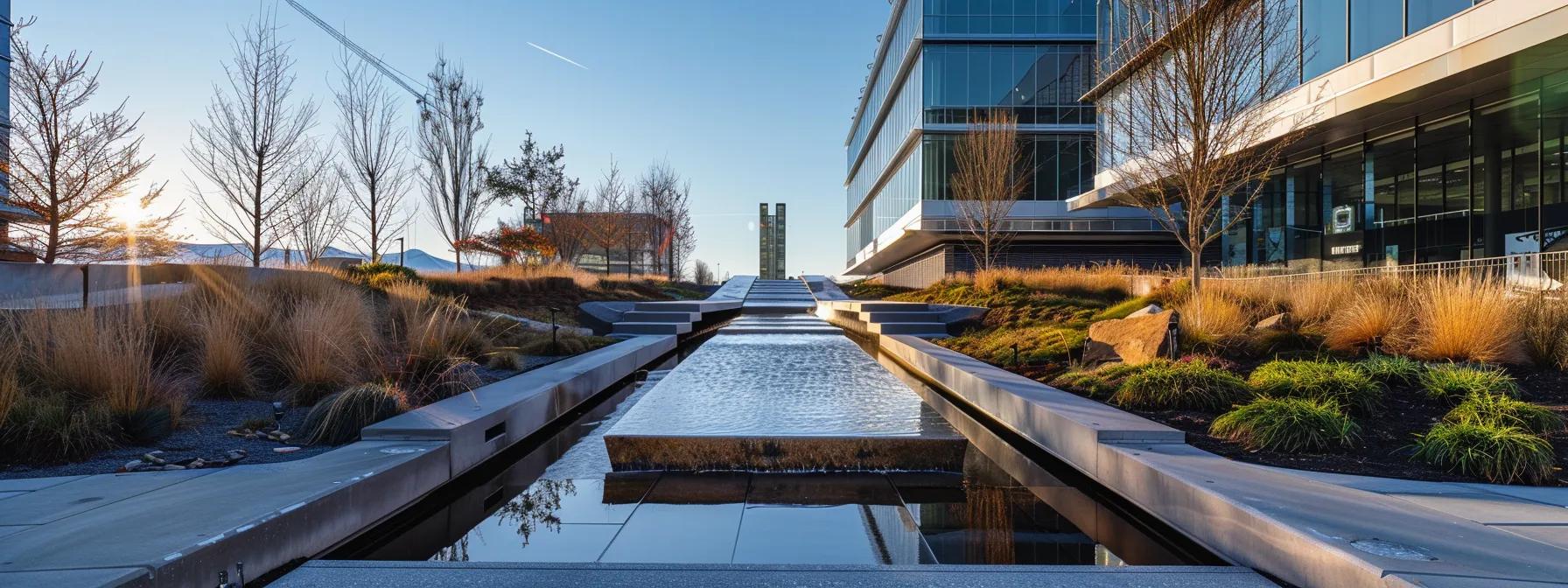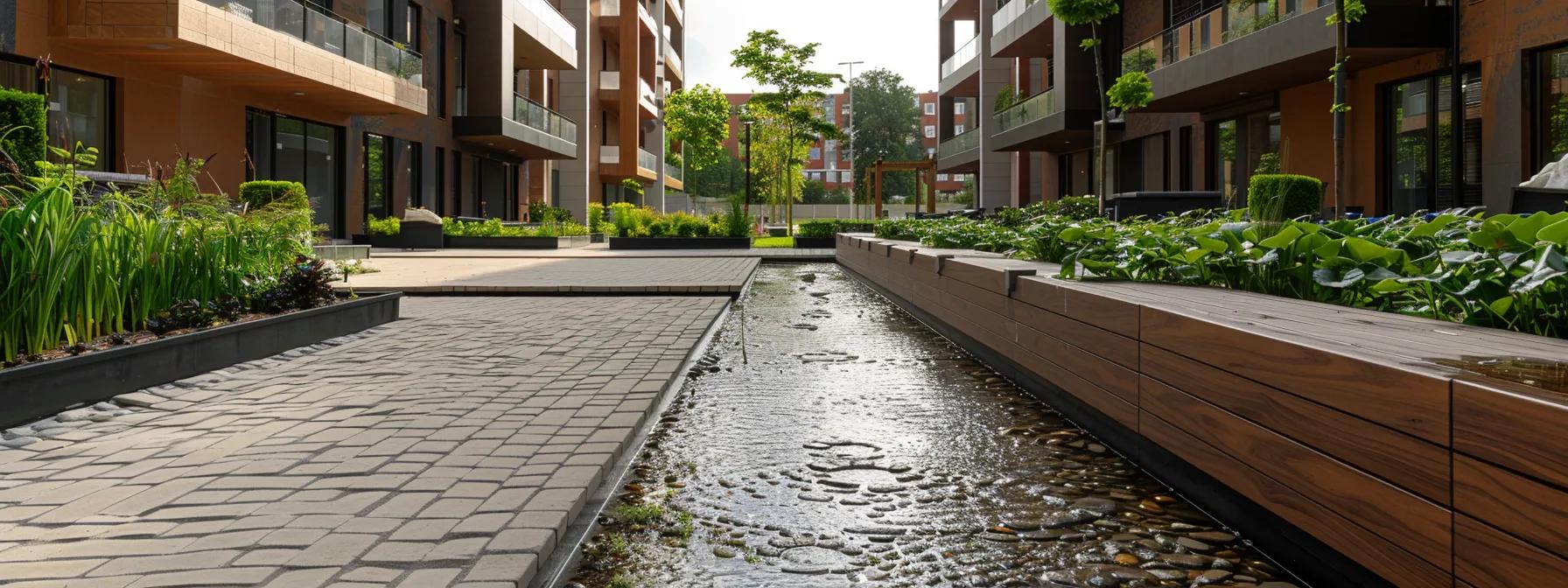
Stormwater Easements Glenmore Park: How Smart Infrastructure Protects Your Property
Stormwater management is a critical component of urban planning in Glenmore Park. This article explores stormwater easements and smart infrastructure used to protect properties from flooding, erosion, and water-related damage. It explains easement rights, new stormwater management technologies, and practical steps for compliance. Homeowners, developers, and local authorities can safeguard investments and promote sustainable community development through these measures. For additional guidance, it is advisable to contact local experts to better understand and navigate these systems.
What Are Stormwater Easements and Why Are They Important in Glenmore Park?
Stormwater easements are legal agreements that allow municipalities or utilities to manage drainage on private property. In Glenmore Park, they help reduce flooding risks, limit erosion, and protect water quality. Easements define areas reserved for drainage infrastructure, retention basins, or green spaces, balancing private property use with community benefits.
By granting access to designated land portions, property owners enable construction, upkeep, and upgrades of drainage systems. This protects neighbourhoods from damage caused by unmanaged water flow while preserving natural resources. Clarity in easement rights allows collaborative work with local authorities for resilient, sustainable infrastructure.
How Do Stormwater Easements Affect Property Rights and Usage?
Stormwater easements limit how owners can develop their land, particularly by restricting permanent structures or major landscaping within easement areas. Owners must ensure plans for decks, fences, or heavy planting comply with easement regulations to avoid disputes. Surveys and clear definitions help maintain necessary clearances while encouraging alternative designs that enhance property value without hampering water drainage.
What Local Regulations Govern Stormwater Easements in Glenmore Park?
Local regulations provide a framework for safe stormwater management through state laws, planning policies, and environmental standards. They specify design criteria such as minimum widths and clearance requirements, and require detailed plans, impact assessments, and engineering submissions before permitting modifications. Regular updates to these regulations ensure that drainage systems also support water quality improvements and environmental sustainability.
How Can Property Owners Identify Existing Stormwater Easements?
Owners can identify easements by reviewing survey reports, title documents, and official easement maps available at county or city offices. Experts may conduct surveys using GIS mapping and aerial photography for precise boundaries. Consultation with utility providers and local authorities further clarifies easement areas, helping owners plan construction and landscaping projects without legal issues.
How Does Smart Infrastructure Enhance Stormwater Management in Glenmore Park?

Smart infrastructure integrates sensors, automated valves, and real-time data systems to monitor and control water flow. In Glenmore Park, these solutions enable rapid adjustments during heavy rainfall by activating retention basins or redirecting water flow to prevent floods. Data from continuous monitoring supports preventative maintenance and informed decision-making, reducing long-term costs and protecting properties from flood damage.
What Are the Key Types of Smart Stormwater Infrastructure?
Key smart systems include: • Sensor networks that continuously measure water quality, flow rate, and clarity. • Automated control systems that adjust water inflow and outflow using motorised gates and valves. • Green infrastructure (permeable pavements, bioswales, rain gardens) that naturally filter and retain stormwater. • Adaptive drainage systems that use machine learning to predict patterns and optimise performance.
How Does Real-Time Monitoring Improve Stormwater Control?
Real-time monitoring detects water level changes and flow anomalies instantly. This allows systems to trigger automatic interventions—such as opening relief valves—thus reducing potential damage. Historical data from these systems also enhances predictive planning and maintenance, ensuring consistent system performance during adverse conditions.
What Role Does Green Infrastructure Play in Sustainable Stormwater Solutions?
Green infrastructure uses natural processes to manage stormwater. Rain gardens, bioswales, and permeable pavements absorb and filter runoff, reducing flood risks and improving water quality. Integrating these systems reduces reliance on mechanical drainage, lowers maintenance costs, and supports urban biodiversity, making them key to sustainable urban environments.
How Can Glenmore Park Property Owners Assess and Comply With Stormwater Easement Requirements?
Owners should proactively review property records and obtain current easement maps. Consulting a professional surveyor or civil engineer clarifies the extent of easements and ensures development plans do not conflict with water management obligations. Regular communication with local authorities helps owners stay updated on regulatory changes.
What Steps Are Involved in Stormwater Easement Assessment?
Assessment involves: • Gathering documents like property deeds and previous surveys. • Conducting a physical site survey to verify drainage patterns. • Engaging experts to evaluate compliance with local regulations. • Compiling a report with maps and recommendations for submission to local authorities. Following this process ensures that projects meet legal and environmental standards.
How to Navigate Easement Acquisition or Modification in Glenmore Park?
If current easements hinder desired development, owners may acquire or modify easements by: • Preparing a detailed proposal outlining the changes and their benefits. • Discussing plans with regulatory bodies, supported by updated surveys and engineering assessments. • Participating in public consultations to address stakeholder concerns. Successful proposals result in amended title documents and tailored drainage solutions.
What Are the Consequences of Non-Compliance With Easement Regulations?
Non-compliance can lead to fines, forced modifications, and increased flood risks. It may also cause structural damage, depreciate property values, and create legal complications when selling or financing a property. Ensuring compliance is essential to avoid these long-term negative impacts.
What Maintenance and Monitoring Practices Ensure Effective Stormwater Easement Management?

Effective management relies on regular maintenance. Routine inspections, cleaning, and timely repairs keep drainage channels clear, preventing blockages and flooding. Seasonal adjustments to maintenance schedules are essential for year-round efficiency.
Monitoring has improved with smart systems that use sensors and IoT devices to detect issues instantly. These systems allow for quick intervention, reducing repair costs and preventing infrastructure damage.
How Often Should Smart Stormwater Systems Be Maintained?
Typically, maintenance is recommended quarterly to ensure sensor accuracy and system responsiveness. During heavy rainfall or extreme weather, additional checks may be required. Regular cleaning, protocol testing, and system checks are key to preventing downtime and maintaining performance.
What Tools Are Used for Monitoring Stormwater Infrastructure Performance?
Monitoring tools include sensor networks, automated cameras, drones for visual inspection, remote data loggers, and GIS integration. These tools deliver real-time insights that empower property owners and local authorities to respond swiftly and efficiently to any issues.
How Does Regular Maintenance Protect Properties From Flooding and Erosion?
Regular maintenance prevents debris buildup and structural degradation in drainage channels, ensuring continuous water flow. This reduces flood risks and soil erosion, thereby protecting property foundations and preserving landscape integrity over the long term.
Why Choose Local Experts for Stormwater Easements and Smart Infrastructure in Glenmore Park?
Local experts possess deep knowledge of Glenmore Park’s climate, topography, and regulations. Their experience allows them to offer customised, efficient solutions, streamline permit processes, and address local environmental challenges effectively.
What Local Knowledge Is Essential for Effective Stormwater Management?
Essential local knowledge includes: • Historical rainfall and flooding patterns. • Soil types and topography. • Existing drainage conditions and previous modifications. This understanding helps in designing systems that are realistic, compliant with current guidelines, and capable of handling local challenges.
How Do Smart Technology Solutions Tailor to Glenmore Park’s Unique Environment?
Smart systems are calibrated to local rainfall patterns and soil conditions. Integration with GIS data allows for precise mapping of drainage issues and adjustment of automated controls to suit unique local needs, ensuring rapid response to climate variability.
What Success Stories Demonstrate the Impact of Professional Stormwater Services?
Numerous local projects have successfully reduced flooding and maintenance costs through professional stormwater easement management. Residential and commercial developments have benefited from reduced flood occurrences and improved property safety, demonstrating the effectiveness of tailored smart infrastructure.
How Does Sustainable Stormwater Management Benefit Glenmore Park Properties and the Environment?

Sustainable stormwater management protects properties by reducing flood damage, erosion, and structural deterioration. This not only preserves property values but also minimises insurance claims. Additionally, sustainable practices benefit the environment by filtering pollutants, supporting biodiversity, and reducing the need for energy-intensive water treatments.
What Are the Environmental Advantages of Green Stormwater Infrastructure?
Green infrastructure mimics natural processes to slow runoff and filter pollutants. Systems such as rain gardens and bioswales improve water quality, support urban biodiversity, and enhance community aesthetics while reducing reliance on mechanical systems.
How Does Stormwater Management Contribute to Water Conservation?
By capturing, storing, and reusing rainwater, effective stormwater management conserves water that would otherwise be lost to runoff. This treated water can be used in irrigation and landscaping, reducing pressure on municipal supplies and promoting resource sustainability.
What Long-Term Property Value Benefits Result From Smart Stormwater Solutions?
Smart stormwater systems reduce long-term risks and maintenance costs, thereby protecting and enhancing property values. They also boost a property’s marketability by adding sustainable, high-tech features that appeal to buyers and lenders.
What Are the Common Challenges in Managing Stormwater Easements in Glenmore Park?
Common challenges include disputes over property boundaries, outdated drainage systems not equipped for extreme weather, budget limitations, and evolving regulations. These issues require ongoing adaptation, mediation, and technical upgrades to ensure efficient water management.
How Can Property Owners Overcome Easement Disputes and Conflicts?
Effective resolution involves clear communication, updated surveys, and professional mediation. Owners should document easement boundaries and engage with local authorities to negotiate mutually beneficial solutions, thereby avoiding prolonged legal disputes.
What Technical Limitations Affect Stormwater Infrastructure Performance?
Older systems may lack modern sensor technology or the capacity for heavy rainfall events. Budget constraints and the need for integration with new smart technologies can further limit performance. Investing in hybrid systems that combine old and new methods can bridge these gaps.
How Do Changing Regulations Impact Easement Management?
Regulatory changes can require updates to easement agreements, additional documentation, or infrastructure modifications. Staying informed and consulting experts helps property owners remain compliant without incurring unexpected costs.
Frequently Asked Questions
Q: What exactly is a stormwater easement, and why is it required? A: It is a legal agreement that grants local authorities the right to manage water drainage on a property to reduce flooding and erosion while protecting water quality.
Q: How can smart infrastructure reduce flood risks in my property? A: By using real-time sensors and automated controls to adjust drainage operations, smart systems quickly redirect excess water away from vulnerable areas.
Q: What steps should I take to assess existing stormwater easements on my property? A: Review your property deed, obtain updated easement maps, and consult with a civil engineer to determine compliance with local standards.
Q: Are green infrastructure solutions effective in urban settings like Glenmore Park? A: Yes, solutions such as rain gardens, bioswales, and permeable pavements manage runoff, improve water quality, and support biodiversity.
Q: How frequently should stormwater systems be maintained to ensure optimal performance? A: Typically, quarterly maintenance is recommended, with extra checks during heavy rainfall to ensure sensors and systems function properly.
Q: What long-term benefits can property owners expect from investing in smart stormwater solutions? A: Benefits include increased resilience to weather events, reduced maintenance costs, and higher property values due to sustainable, compliant systems.
Final Thoughts
Stormwater easements and smart infrastructure are essential for resilient water management in Glenmore Park. With proper planning, regular maintenance, and adherence to regulations, property owners can protect their investments from flooding and erosion while promoting sustainable development. Advanced technology combined with local expertise delivers tailored solutions that yield long-term environmental and financial benefits.

